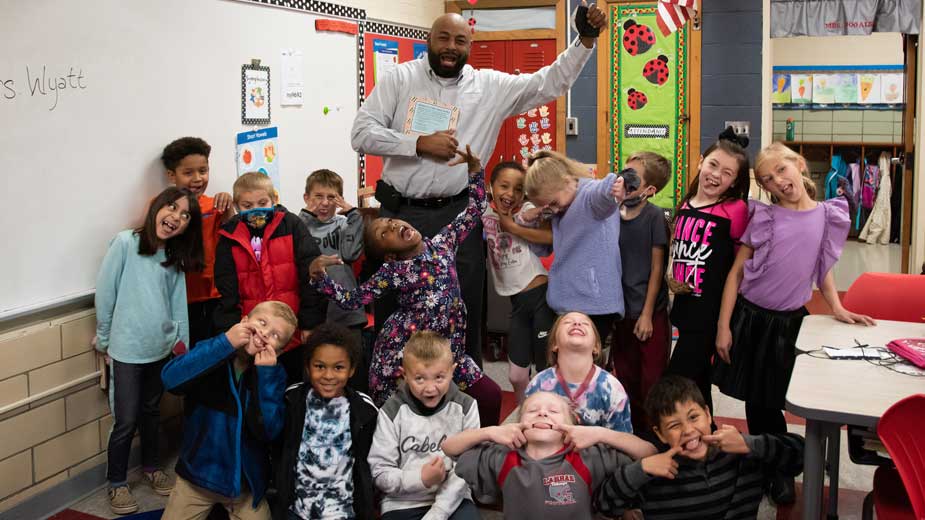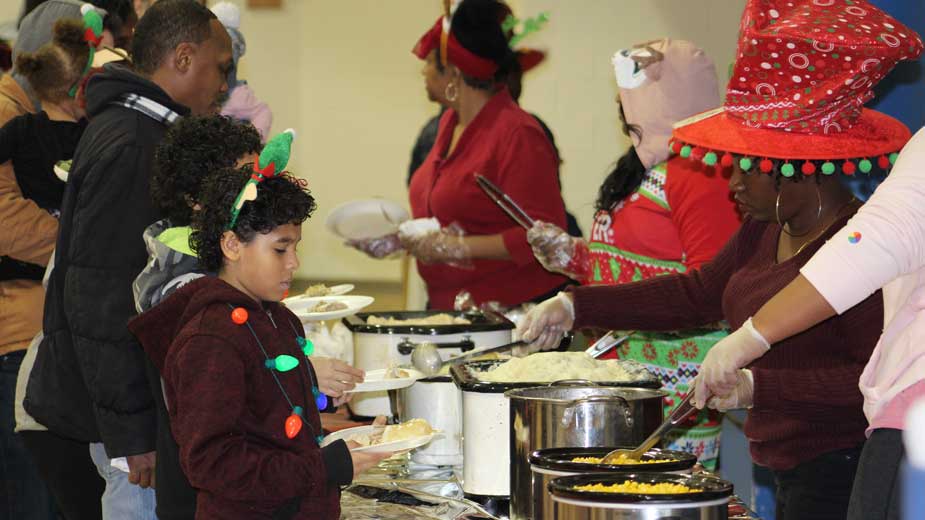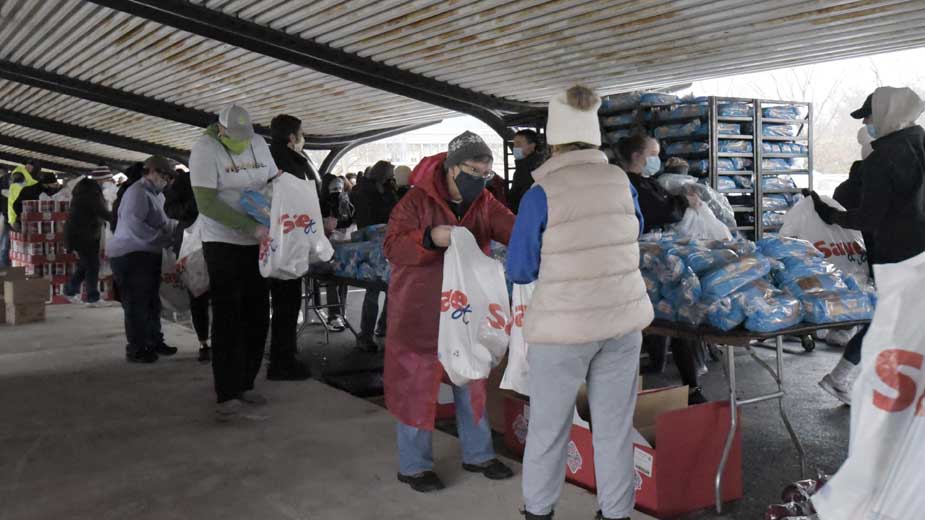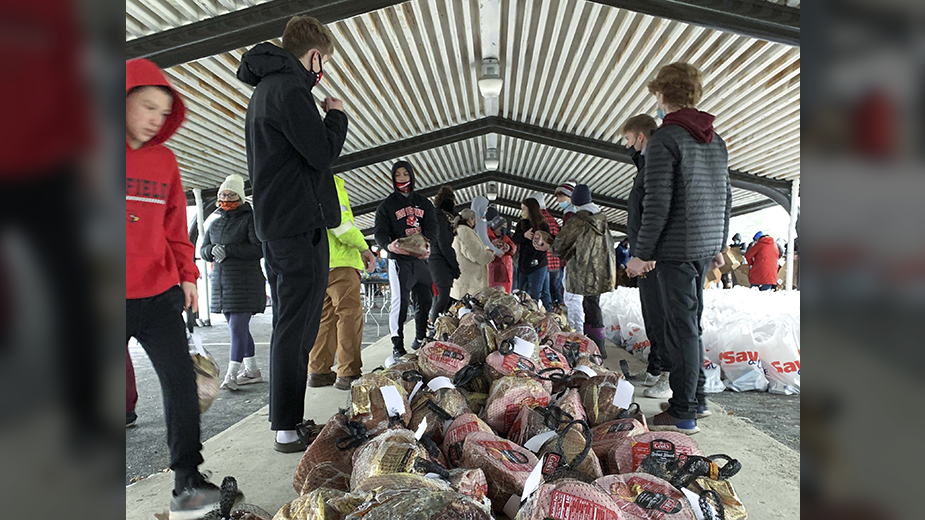YOUNGSTOWN, Ohio – From foundations that fund regional nonprofits to the nonprofit agencies that provide direct services, hiring staff is the biggest challenge they share heading into 2022.
Nearly 60,000 nonprofits in Ohio employ more than 560,000, according to Independent Sector, a national coalition of nonprofits, foundations and corporate giving programs.
In 2020, nonprofits shed 1.6 million jobs nationally and those numbers aren’t expected to reach pre-COVID levels until the middle of this year.
“Many organizations we fund have shared with us that hiring and retaining people has been difficult,” says Bob Hannon, president of the United Way of Youngstown and the Mahoning Valley.
One such organization, the Help Network of Northeast Ohio, could add another four full-time call-takers to its staff of 55 full- and part-time workers, but is struggling to fill those positions, says CEO Vince Brancaccio. That gives him pause as the United States looks to roll out a new 988 number this July for individuals experiencing mental health emergencies.
“We’re expecting, right off the bat, a 15% to 20% increase in suicide-related calls across the board,” Brancaccio says. Suicide Crisis Hotline staff typically field about 175 suicide/crisis calls weekly, he adds.
The Mahoning United Way employs 10 and is hiring for two positions, Hannon says, but can’t get applicants. To attract workers, the organization improved flex time and lets employees work from home when needed.
“People want different things, especially younger staff, in 2022,” Hannon says. “It’s not always more money. It’s more freedom.”

The United Way of Trumbull County had to reduce its staff at the end of 2021 – one full-time and one part-time position – as did some of its partner agencies, says President and CEO Ginny Pasha. With continued uncertainty heading into 2022, many organizations hesitate to plan events or fundraisers.
“There is so much uncertainty with the surges and guidance coming out of the CDC. I don’t think any of us plan further than a month or six weeks out,” Pasha says.
Nonprofit salaries often are lower than for-profit companies, making it challenging to compete for applicants. As job seekers expect more from employers, some organizations are trying to meet those expectations.
Heart Reach Neighborhood Ministries increased some salaries as much as 18% from last year, which is “fairly sizable,” says CEO Mark Samuel. The average starting hourly wage is $12. Competing with for-profit employers with higher starting wages would mean asking donors to increase their giving, he says.
“The things that we’ve done in the past that have brought in qualified applicants have not been working,” Samuel says. “For nonprofits, the pay can’t compete with the for-profit world.”
Heart Reach currently employs nine, which is below the 14 needed. During the summer, the nonprofit adds another 10 part-time positions to operate its food service sites and day camps, he says.

In 2021, Heart Reach increased its workforce through different initiatives. Among them were a government-funded program that pays senior citizens to work at nonprofits, AmeriCorps Vista, workers’ compensation claimants, teens from a work training program, and cleaning staff through a partnership with Youngstown Area Goodwill Industries Inc.
“That’s a huge help,” Samuel says. “It’s those kinds of things to help support what we’re doing.”
Filling administrative roles hasn’t been an issue for the Youngstown Neighborhood Development Corp. But the organization hasn’t had many applicants for other jobs, including a drywall repair worker, says Executive Director Ian Beniston. House repairs make up the bulk of YNDC’s construction work.
YNDC employs 20 and looks to fill three jobs in the first quarter to staff a fresh market opening in the commercial plaza it’s developing at 2915 Glenwood Ave. Payroll is near $1 million for the organization and another $5.5 million is injected into the community through direct service and property investments.
In its 2010-2019 economic impact study, YNDC reported it creates 64.4 local jobs annually and has a total local economic impact of $61,567,709. Fixing a house, for example, creates an additional economic benefit in creating wages for construction workers.
“But then even beyond that, if the property values of the adjacent properties have been able to increase even if it’s a nominal amount, because the house went from a vacant blighted eyesore to one of the houses with the highest standards of maintenance on the street, then all of those things can be quantified,” he says.
About a third of YNDC revenues come from rental and mortgage income, as well as proceeds from sold properties, according to Beniston.
Volunteers Make an Impact
Local volunteers are in good supply, although not all organizations need as many as they did pre-COVID.
The Mahoning United Way finished 2021 with more than 300 volunteers, Hannon says. More volunteers usually means more workplace giving because they are more likely to start giving and will spread the word to co-workers.
“That’s how we’ve gotten new donors initially – through workplace giving,” he says. “In those places, workforce giving usually will explode.”

Events canceled because of COVID required fewer volunteers for the Trumbull United Way, Pasha says. The organization had 278 volunteers in 2021, down from 419 the year before. She’s hopeful that volunteers return after the latest surge in COVID cases goes down.
“I think how things play out over the next month to six weeks will give us a clear indication of what volunteers are going to feel comfortable doing and whether or not we’ll be able to start doing in-person workplace campaigns again,” Pasha says.
On average, volunteer time in Ohio is valued at $25.47 per hour, which is up 3.5% from 2019, according to Independent Sector.
With the pandemic, United Returning Citizens had 17 volunteers in 2020, down from 42 in 2019, says its executive director, Dionne Dowdy. Things picked back up last year when URC had 29 volunteers and Dowdy expects more to get involved this year.
United Returning Citizens will need them as it begins new programs, including a mentorship program, its female empowerment monthly podcast, a mental health program and the URC Grows cannabis school.
In 2021, the organization helped 27 returning citizens gain employment through partner employers, entrepreneurship or its own lawn care program, Dowdy says.
URC relies on partner organizations such as the Mahoning Valley Manufacturers Coalition to find job opportunities for those it serves.
The challenge, she says, is overcoming trust issues employers might have about individuals coming out of prison. Dowdy has found those who are in prison for longer terms do the best when returning.
“These are the guys who really want to be self-sufficient and take care of themselves,” she says. “They have this passion to do good and be well.”
Younger clients are assigned to work with URC Lawn Care to develop their soft skills and be mentored by older employees.
URC employs eight between the agency and its lawn care business. It could use another three or four, although funding prevents the agency from hiring, she says.
“We build up their self-esteem, so when they go back to a career, they’re not recidivizing,” she says.
Increase in Local Donations
Generally speaking, all nonprofits would like to see more dollars to fund their work. Foundations and large donors are the primary sources of income for direct service nonprofits.
The Community Foundation of the Mahoning Valley awarded 346 grants and distributions totaling just under $2.5 million in 2021, reports President Shari Harrell. Despite an injection of American Rescue Plan funds into the sector, “there’s always a great need for financial resources for nonprofit organizations,” she says.
The Arnett Family Fund the foundation received last year will give it more flexibility for making grants than before, Harrell says.
“So it doesn’t have to be just project-based. It doesn’t have to be based on certain outcomes,” she says. “Having those dollars that don’t have restrictions around them frees up any organization to do the work they’re designed to do rather than chase dollars and fit things into neat little outcomes they’re looking for.”
In 2021, nonprofits saw more individual giving than ever. On average, Ohioans give $5.2 billion to charity annually, representing about 2.8% of household income, reports Independent Sector.
Increased levels of giving despite the pandemic gives the Help Network’s Brancaccio hope.
The agency launched its Break the Chain of Suicide fundraising campaign in September.
“In this past year we’ve had more charitable donations from people than ever,” Brancaccio says. “And I think that’s something that speaks volumes.”
That local support has nonprofits hoping for a strong 2022, despite the challenges of the last two years.
“We’re definitely a major part of the Valley,” says United Way’s Hannon. “Many of these organizations are here and aren’t going anywhere.”
Harrell attributes that stability to greater awareness of the effect nonprofits have on the community and its economy.
The Community Foundation itself is tailoring its own growth to provide support beyond grant dollars. That’s led to its work with the Healthy Community Partnership and its internal efforts to become more diverse and deploying resources more equitably, she says.
“I think overall, the nonprofit sector has a huge impact in a variety of ways – and a lot of them focus on quality of life issues,” Harrell says. “I don’t think there is a sector of our lives or our economy that’s not touched by the work of nonprofits.”
Pictured: Volunteers distribute hams during a recent United Way Satur-Day of Caring.
